March 8 of last year was, in all likelihood, the last time you were part of a mass gathering of people at a synagogue. Maybe it was the next day or two when Purim was celebrated and the Megillah was read; but the Purim carnival — that is always the date that brings families and friends together, crammed into social halls and bounce houses, eating hamentaschen and running around the familiar confines of your synagogue.
Who knew that roughly 100 hours later, the world as we knew it would be screeching to an abrupt halt?
As we look forward to getting vaccinated and gathering with friends and family once again, we look back. We talk to clergy and executive directors to look back at having the carnivals, closing the buildings, and the lessons learned along the way.
For starters: can you believe we actually had Purim carnivals?
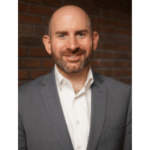
Beth El Synagogue Managing Director Matt Walzer
Matt Walzer, Beth El Synagogue’s managing director: I remember the emails flying around. Should we keep or cancel the bouncy houses? Looking back, it’s so humorous because we knew so little about COVID, but we knew that we shouldn’t have a bunch of kids in a bouncy house. So, so we canceled bouncy houses. In hindsight, should we have had the Purim Carnival? I mean, probably not, right? But how would we have known that? And who would have known that two weeks later that the whole world would start shutting down?
Miranda Weisbuch, Adath Jeshurun Congregation’s executive director: Hindsight is 20/20. But at that point, there was not community spread in the Twin Cities. I don’t know how many cases there were, but it was not advised to close down.
Weisbuch is right; according to the New York Times’ state-by-state COVID case graph, Minnesota’s first positive case wasn’t reported until March 10.

Shir Tikvah Rabbi Michael Latz
Rabbi Michael Adam Latz, Shir Tikvah Congregation: We all remembered what it was like a few years ago with SARS or H1N1. I remembered being in the synagogue and we had signs up everywhere: Wash your hands. Use hand sanitizer. Don’t share food. I was under the illusion — or the delusion at the time — that it was gonna be another thing like that where it was serious, but if you wash your hands, everybody’s gonna be okay.
Mount Zion Temple Rabbi Adam Stock Spilker said that they started emailing congregants early. He opens a file on his computer called “COVID 19-communications” to confirm that March 9 was the first communication about it to the Mount Zion community.
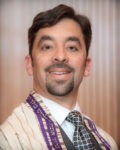
Mount Zion Temple’s Rabbi Adam Stock Spilker
Spilker: So that communication says, “We want it to be clear about how we’re thinking about this. We write this letter to help in the way we talk about COVID-19 and prepare for this dynamic situation. As we learn about a potential pandemic, we respond in a variety of ways.” And we talk about how we are monitoring the situation, and what we request of you, which was about monitoring symptoms, sharing facts, not fear. And then it said “And so tonight, we begin the topsy turvy holiday Purim.” So that was Monday. On Wednesday, that was when the World Health Organization declared it as a pandemic, I believe. (Editor’s note: it was). Thursday it became clear that we shouldn’t be doing this just as Mount Zion.
So the Purim carnivals weren’t the super-spreader events that they could have been. But not long after the holiday, things started moving quickly — and even the immediate decisions were changing rapidly. Shir Tikvah sent an email to the community at 3:45 p.m. on Wednesday, March 11, that classes, meetings, and services were going to continue as scheduled, although the e-mail also implored anyone feeling unwell to not attend. Less than 21 hours later, a new email announced the closing following Friday night services on March 13.
Latz: It’s funny: When you hit send on an email most of the time, we do that really unconsciously. It’s just that it’s just a reflex at this point that our finger does. But I remember being with [Executive Director] Allison [Olig] the moment she sent it out to the community, and I distinctly remember in that moment, ‘this is this is a big deal.’ I felt the weight of that moment really acutely.
Spilker: I remember Michael (Latz) was in touch saying that Shir Tikvah was going to be closing. I think that was the first step. And I said we should be coordinating this with each other. So I was able to call (JCRC Executive Director) Steve Hunegs, and we call together this meeting on Thursday, about staying in touch. The Minnesota Rabbinical Association, the leadership, was becoming more clear for the community in providing direction and values.
By March 13, Bet Shalom, Beth El, Shir Tikvah, Temple Israel, Mount Zion Temple, Sharei Chesed, and Temple of Aaron had all announced they would be closing following either Friday or Saturday night services.
Rabbi David Locketz, Bet Shalom Congregation: I remember we had a board discussion about closing the building, and everybody thought I was nuts because nobody was closing yet. We just kind of could see it coming. I wrote a letter to the congregation about how we were going to be closing after Shabbat and we look forward to seeing everybody Friday night, and we were gonna introduce the elbow bump. The ridiculousness of that, like somehow it was okay to be close enough to another person to elbow bump them.
Walzer: It must have been that Monday or Tuesday (March 9 or 10) where I personally
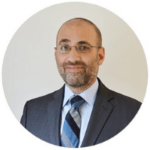
Bet Shalom Rabbi David Locketz
felt like what I was seeing that were gonna be shutting down. It’s not a matter of if we’re closing, it’s a matter of we’re going to be told we have to. We felt like we were in the best position to provide continuity of services by not waiting for somebody to tell us when we had to close and just saying, okay, we’re just going to do it. And we feel like we can take care of people better. We feel like we can play our role as good servants here by doing so. And so we just made the decision to do it.
Weisbuch: That very last Shabbat before everything was closed, we took certain precautions. You look back and you think how quaint that it was that we had all these hand sanitizer stations and we had layleaders wearing gloves and serving Kiddush rather than having people serve themselves. So I mean, all these things that probably were not going to have a dent on the transmission of coronavirus, but that was what was advised at the time. So we made the best decision at the time.
Rabbi Tamar Grimm, Beth Jacob Congregation: We had a lot of conversations around how important people’s spiritual life is to their overall well-being, and balancing that with their physical well-being. Ultimately we were really most concerned that we not create a — super-spreader event wasn’t a term, but that was essentially what we didn’t want to be. We felt that if we remained open, people would feel obligated to come, and because you need a minyan to daven, we didn’t want people to feel like they would be letting down the community by not showing up. We were very concerned that people might feel pressure to come.
Synagogues weren’t the only things that were being shut down. By the end of March, the MRA, in conjunction with Hodroff-Epstein Memorial Chapel, began conducting all funerals virtually.
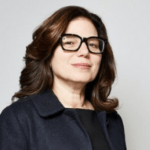
Temple Israel Rabbi Marcia Zimmerman
Temple Israel Rabbi Marcia Zimmerman: I had 30 funerals between the middle of March and May, and the first 10 of those were in person. Less than 10 people, no one was masked because at that point we heard masking isn’t effective. We did social distancing, we did wear gloves in order to put earth into the grave. The last one I did was when a child traveled, and the next day came to the funeral. And I realized the family did not use social distancing. And so I said, “Okay, this is the end of that.”
Zimmerman and Rabbi Morris Allen began conversations with Hodroff officials in February 2020 — long before anyone knew the full effect of what the pandemic would bring.
Zimmerman: We better think about what we’re directing the community to do. Because if somebody — and this is when we didn’t know all the details — is dying, they have COVID, that means the entire family is by their bedside, right? I didn’t even know that people are going to not be able to be by people’s bedside. And now we’ve got an exposure that’s 10-fold. And then we’re gonna invite the community to that. Absolutely not. I just knew that we were going to be in trouble around sort of the death and dying part of things. I’m just thinking people are gonna die from COVID. So the first 10 or 15 people, nobody was tested for COVID at that point. But the last 15 people (who died), a number of them died of COVID after being healthy. So that was a huge learning curve.
So the doors are closed, and a year ago, nobody knew quite how long that was going to be for. But it also meant that for some period of time, we were all going to be experiencing services through the magic of the Internet. To Zoom or to livestream? Opinions were divided. Beth El’s Director of Engagement and Programming Operations, Liz Rappaport, said via e-mail the synagogue’s last in-person Shabbat was March 14, and they were on Zoom the next week. But was the transition that easy for everyone? Well, that depends…

Beth Jacob Rabbi Tamar Grimm
Grimm: First of all, we’re a Conservative synagogue, so there were halachic considerations. And initially, we only live-streamed and we were having to sort of figure this out without any kind of formal direction from the movement because it took them a while to put together a teshuvah on the subject. They were putting things on their website instead of sending out guidance, but it was not official guidance; it was official in the sense that it was from the movement, but it wasn’t from the Committee on Jewish Law and Standards. Rabbis were having to kind of figure out what was right for their community halachicly, and what was right for their community in terms of what the community needs were in terms of an online prayer space.
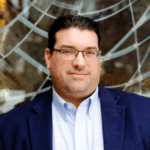
Temple of Aaron Cantor Joshua Fineblum
Cantor Joshua Fineblum, Temple of Aaron: We didn’t Zoom right away. Starting a couple of weeks later, the clergy and program team and our executive director got together and started talking about what can we do for our community. How can we make this happen? I would say it took us, you know, a good couple of weeks to really think about that getting going.
Grimm: After maybe five or six weeks of live-streaming, I really felt that that wasn’t providing what our community needed in terms of being able to see each other and feel like a community. Watching services just didn’t have the feel of gathering together on Shabbat. So we decided to switch to Zoom. Some of our shomer Shabbas folks weren’t watching the livestream and weren’t going to get on Zoom, and still haven’t. But some of them did. And it became clear that the majority of the community just really needed to be able to see each other’s faces.
Zimmerman: One of the positions we hired for is when we hired Rabbi [Tobias] Moss was to get us into social media more. So he just hit the ground running and he took over the worship, and he took up the B’nai Mitzvah process. For a while, we weren’t doing any B’nai Mitzvah. He had a very strong point of view that we need to have things live. And that it’s really important to not stage services and not have a streaming thing where there isn’t an ability to have some kind of connection and interaction. We say, “Okay, we’re in your hands, tell us how to do it.” And he’s been pretty much driving that train from the start.
Latz: It’s the 100 hours leading up to the shutdown, but then the next 100 hours is the interesting part too. How do you put a shul online? What do services look like? We didn’t know from Zoom bombing yet, so we’re just sending everybody links and putting it on social media.
We at TC Jewfolk were guilty of that too. If synagogues had a link to anything, we HAPPILY posted it with no idea of the security risks at play. So, we all learned pretty quickly the right way to do things like that.
Latz: I didn’t know until our third week in that, oh, you can control whether or not people are muted. We had somebody four weeks in, while doing the Barchu, who was (unmuted) ordering their Chinese chicken dinner from Szechuan Spice and asked for extra spicy eggplant and extra fortune cookies. So some of these moments were hysterical.
So, did anyone think shutting down synagogues was going to be a quick thing?
Fineblum: We were like “Hopefully, we’ll get back together in July.” And that didn’t happen. “Hopefully, we’ll be together for holidays and a big place outdoors.” Nope. And so it goes, and here we are a year later. And now we’re starting to come back. We’ve done outdoor programming, whether that’s been socially distant programming in our parking lot, or we’ve done only in-car programming, where people can’t get out and socialize.

Adath Jeshurun Executive Director Miranda Weisbuch
Weisbuch: This pandemic has allowed us to try things and do things, and be creative in ways we never imagined. And even if we did imagine them before, it might have taken that much longer to be able to actually do them. So we could sort of take programmatic risks, risks with all sorts of things, without that fear of failure. Because at the end of the day, it’s a pandemic.
Latz: I thought it would a two-week respite where I wouldn’t have to go into the office. And we’ll come back in a few weeks and everything will be fine. Maybe I was telling myself that as a coping mechanism, let’s be fair. But between the Zoom meetings and pastoral meetings and meetings to decide what we’re doing. And then we were like “How are we gonna get through Pesach?” And then how are we going to get through, immediately after Pesach? Then the question was — because this is not going away soon because the numbers were climbing — “Oh, my God, what are we gonna do about the High Holidays?”
That’s another story for another time.

